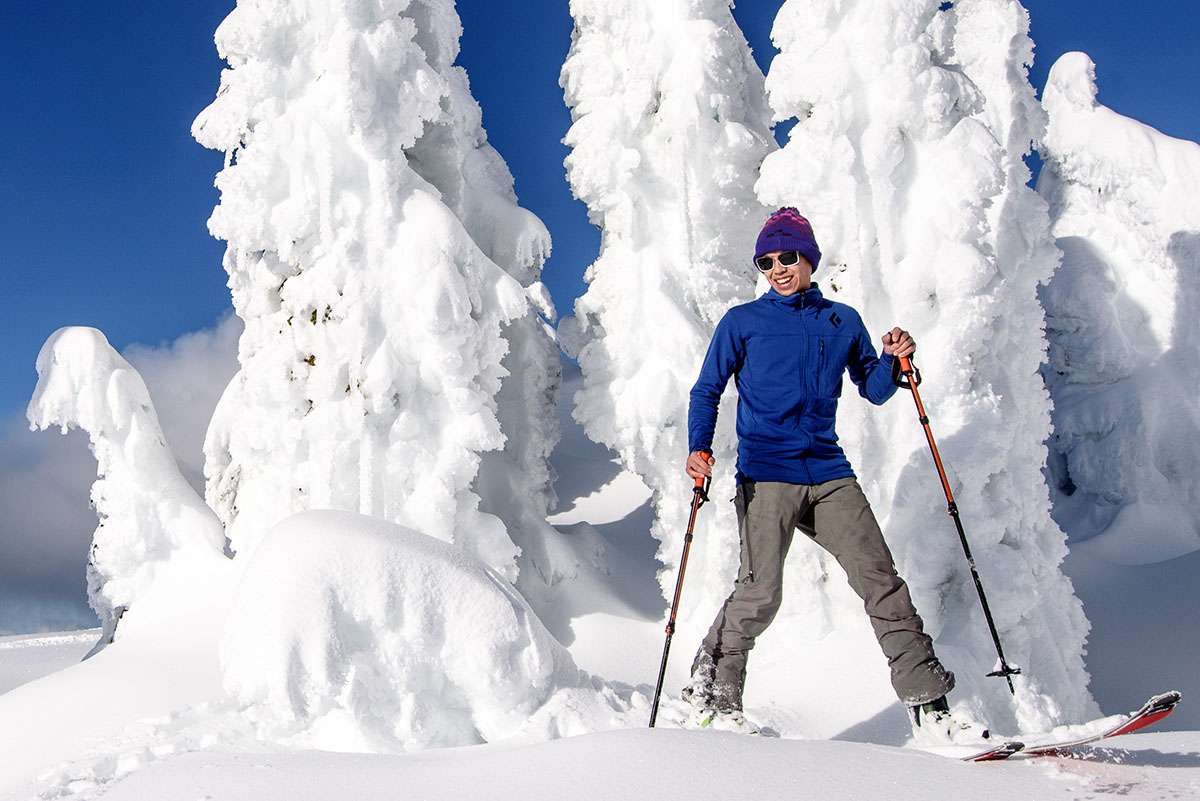
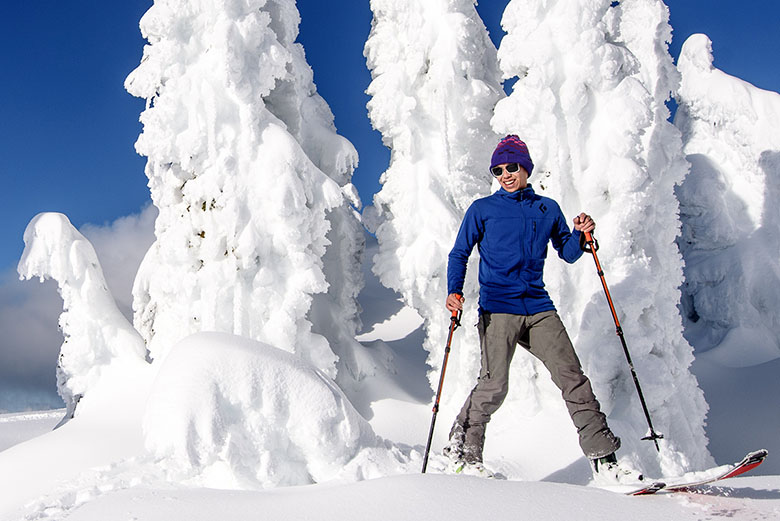
Redesigned for 2017, the Black Diamond CoEfficient Hoody is a highly breathable, technical fleece jacket. We tested it this winter in the mountains of British Columbia under varied conditions from mild and damp to frigid and windy. Overall, the CoEfficient is very impressive from a breathability standpoint and works great as a lightweight midlayer for ski touring and mountaineering. It’s also a nice outer layer option for hiking and climbing in warmer temperatures. And although not warm enough to wear as a standalone piece in the cold, the slim fit is easy to wear under a shell or insulated jacket. Below we break down the CoEfficient’s breathability, warmth, water protection, features, and fit and sizing. To see how the Black Diamond CoEfficient stacks up, check out our comparison table and articles on the best fleece jackets and best midlayers.
Breathability is one of the strong points of the Black Diamond CoEfficient Hoody. The jacket is made with Polartec Power Dry with a grid design on the interior to wick moisture from your skin. The inside of the jacket consists of small rectangular blocks of puffy high-loft fleece, which are arranged in a waffle pattern on top of a thin, air permeable fleece. The idea is that the small blocks trap a thin layer of air around your body, keeping you warm while inactive. And when you’re moving and working up a sweat, the blocks efficiently pulls moisture from your skin, and the thin fleece surrounding the blocks releases hot air. From our experience, the system works pretty darn well.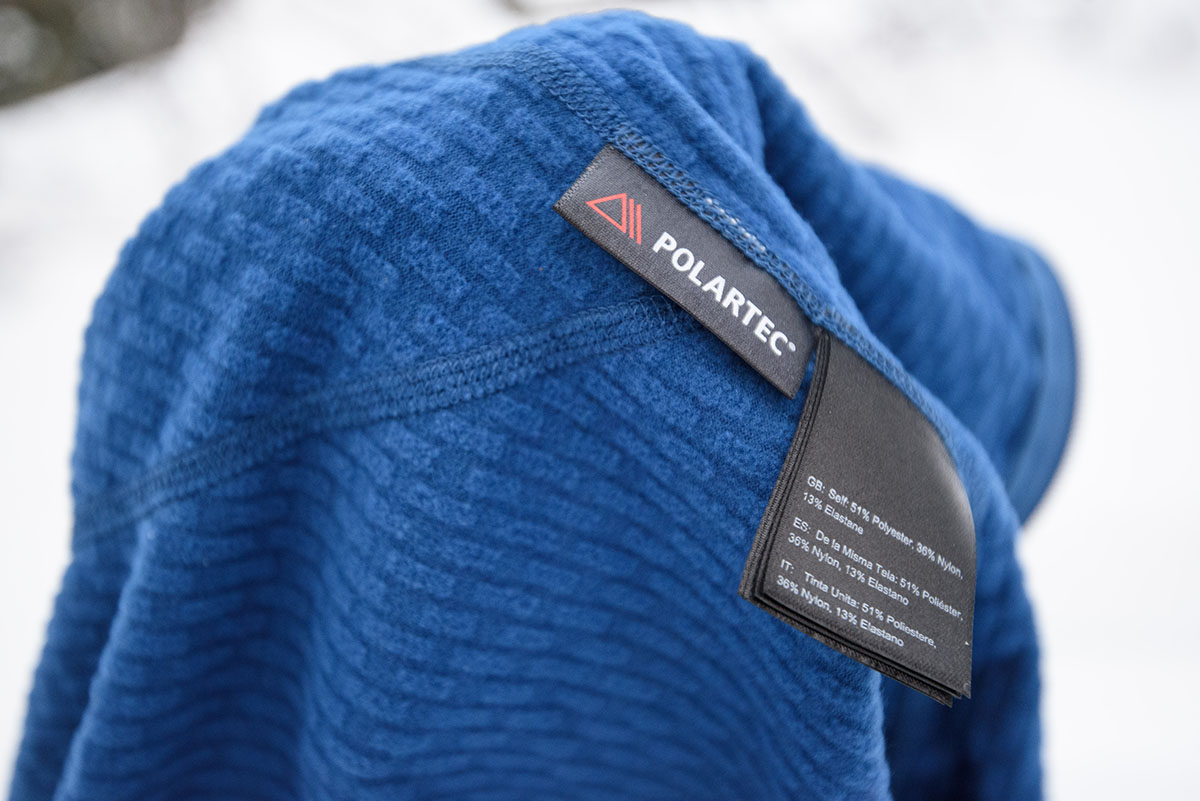
I was most surprised by how breathable and comfortable the CoEfficient Hoody felt over a wide range of temperatures. I wore it throughout the day while skiing laps in the forest on a stormy weekend in B.C.’s North Shore Mountains, a place with a fairly mild and wet maritime climate. On the uphills, I wore the hoody well after my friends had stopped to strip down to their baselayers. Despite wet snowflakes falling on the hoody, I stayed warm with the sleeves only a little wet to touch. Once the precipitation and wind increased, I tucked into my hardshell for more protection.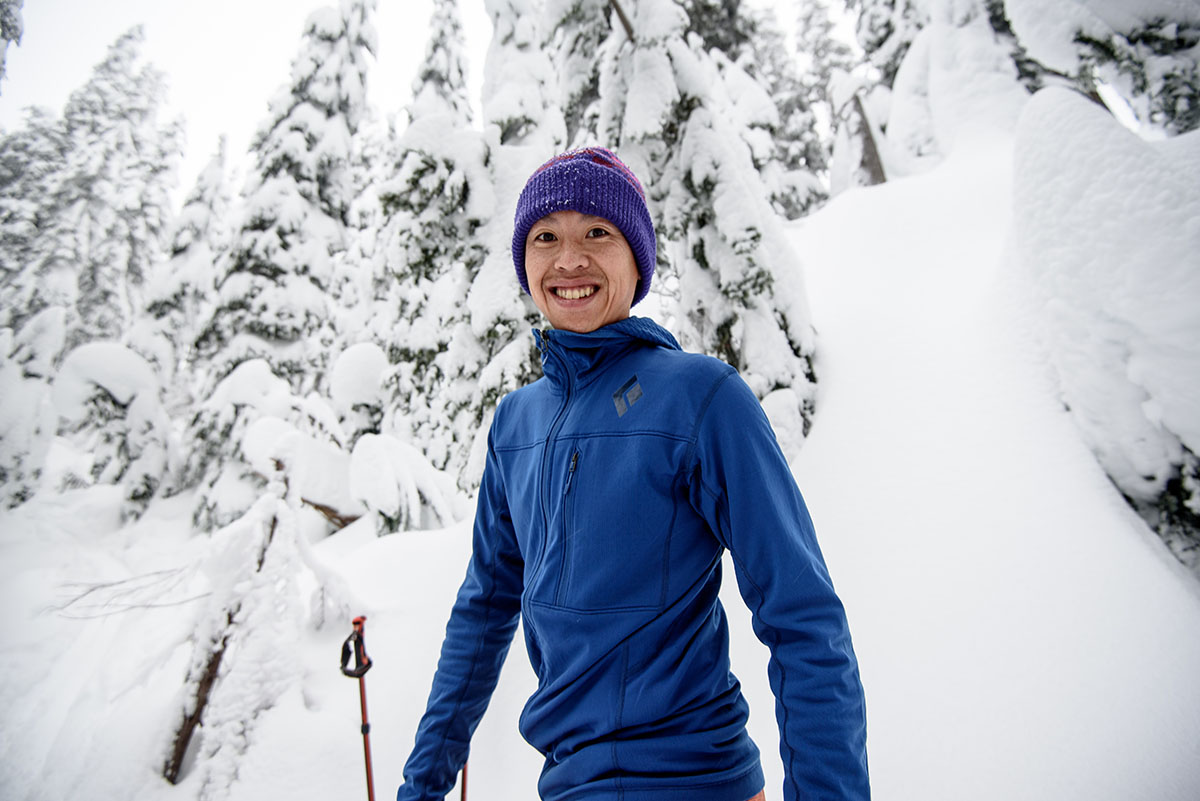
While not moving in damp conditions like those described above, the CoEfficient doesn't offer enough warmth to wear it on its own. During lunch breaks, I needed to layer up with a synthetic puffy. The good news is that the slim fit of the CoEfficient allows you to wear it underneath a fleece or softshell without feeling constricted.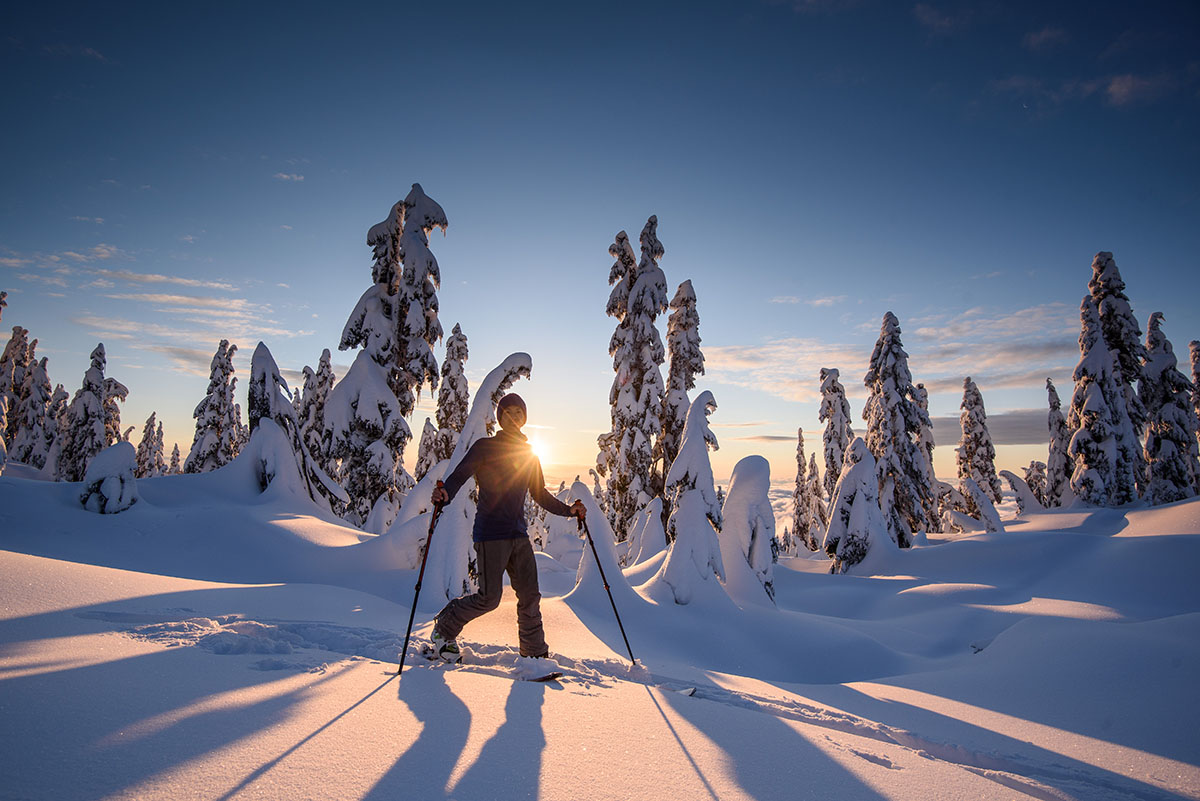
I also tested the CoEfficient Hoody in drier and colder temperatures after a ridge of Arctic air settled over the Coast Mountains. I was equally comfortable wearing the hoody and moving around in the mountains when the temperatures dropped to 14F (-10C). The coldest I experienced was -4F (-20C) with strong winds during a four-day hut trip. On these days, I managed to make my layering system work (when it's cold, it's critical to have a layering system that keeps everything dry as wet sweat is not your friend). I would start the morning off with my baselayer, the CoEfficient Hoody as a midlayer, a big puffy, and a Gore-Tex hardshell on top. As I warmed up on the skin track, I took off the puffy.
At the end of each day, I was glad to see that both my baselayer and the CoEfficient Hoody were relatively dry with minimal retained moisture. Due to the drafty backcountry cabin that I was staying in, it was especially important to me to have dry layers at the end of the day. Because the jacket is so comfortable, I only took it off once during that trip, skiing and even sleeping in it.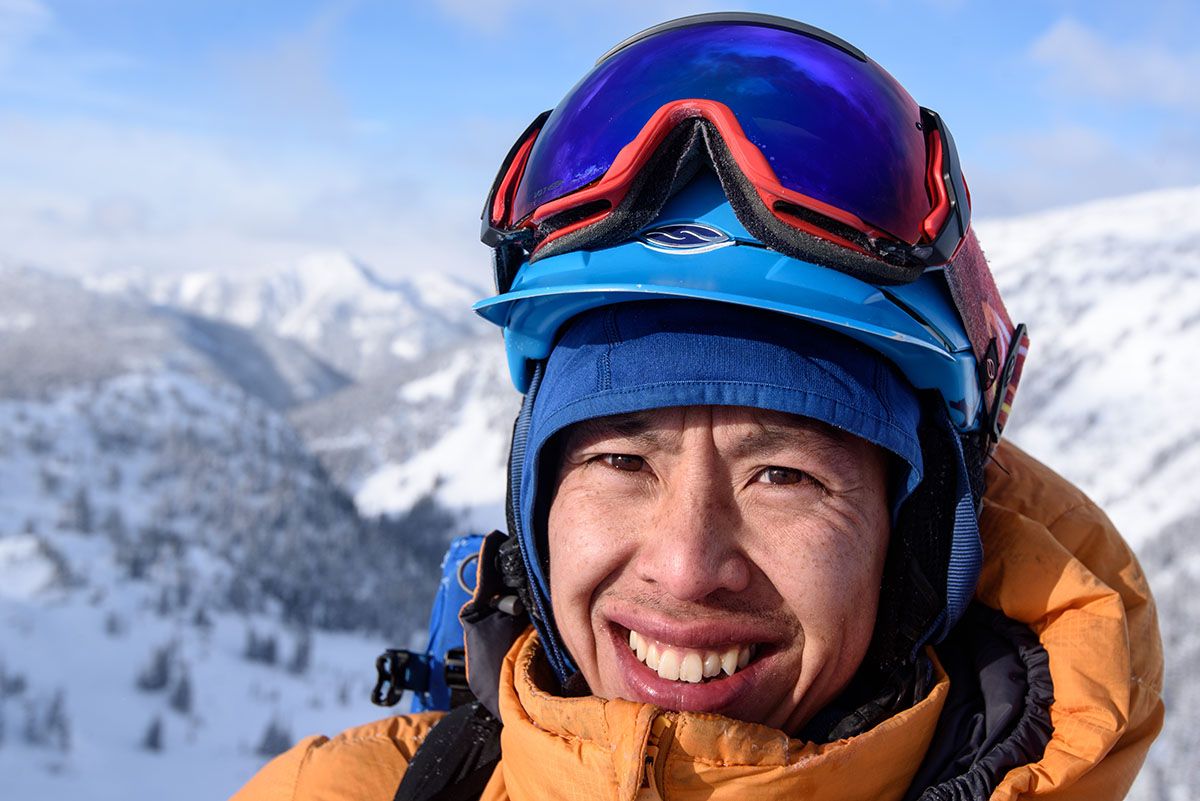
Although the CoEfficient doesn't have a DWR coating or make any claims to be resistant against snow, I found that it does a sufficient job of shedding light snowfall. The fleece dried quickly, and I didn't find that snow was melting into the jacket and staying wet. On my ski days, the main area that got wet was behind my back along my pack (my failure to brush snow off it likely contributed to this). Fortunately, the fleece retained most of its warmth when wet thanks to the heat trapped in the tiny hollow fleece fibers. But if you’re looking for an outer layer with a DWR treatment, you’ll have to step up to an even more technical fleece like the Arc'teryx Konseal.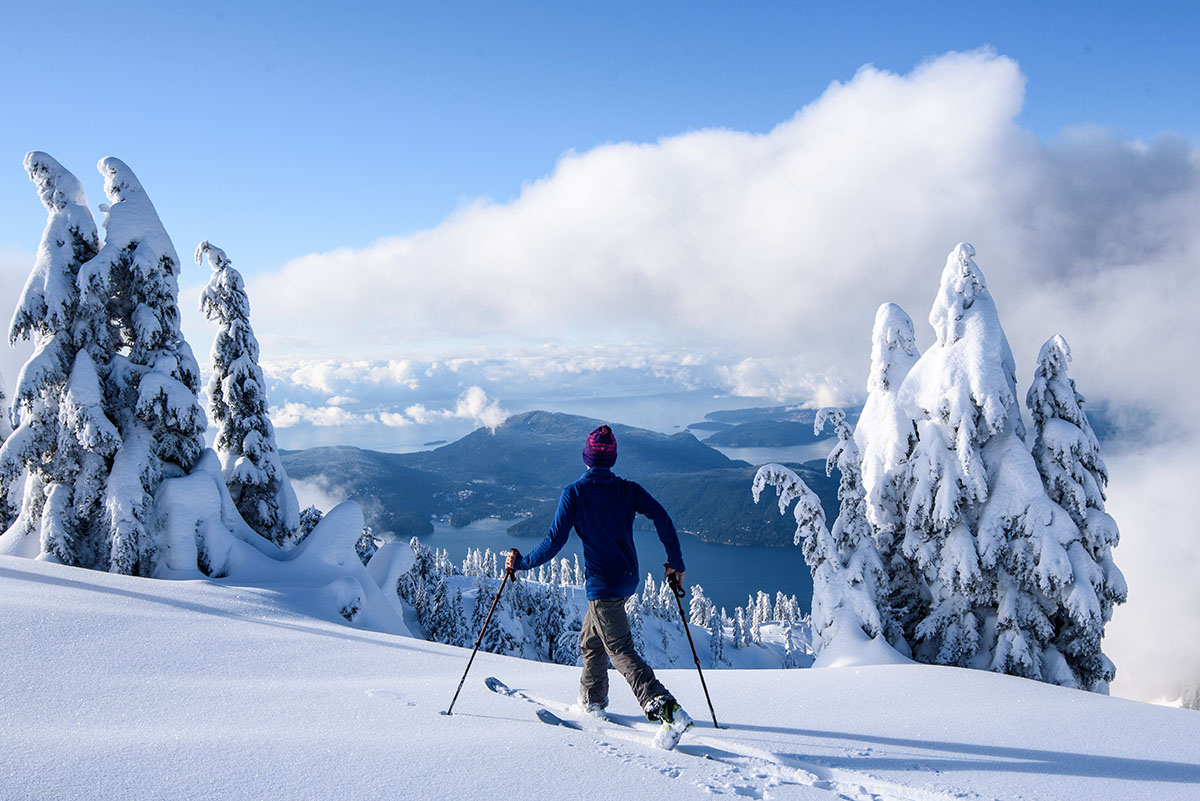
In comparison to my current ski touring midlayer, the Outdoor Research Ferrosi softshell jacket, the Coefficient Hoody felt more comfortable to wear and was noticeably more breathable due to its lower resistance to the elements. But the CoEfficient Hoody is less of a standalone ski jacket in cold or wet conditions, whereas I often ski with just the OR Ferrosi jacket. In all but the mildest weather, I layered up the CoEfficient with a hardshell jacket before skiing down. The jacket is great on the uphills, but too thin and air permeable for most ski descents.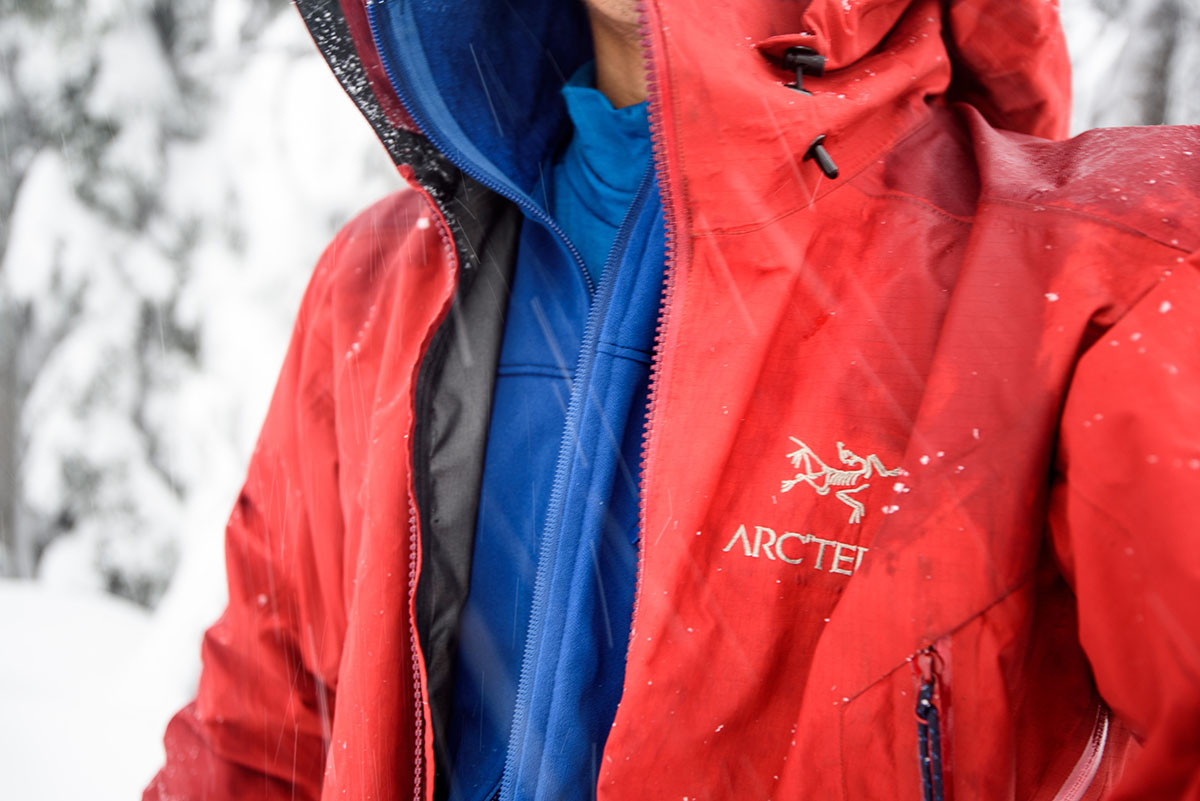
The CoEfficient Hoody comes with a large, zippered chest pocket on the left side. It's not quite big enough to use as a stuff pocket for the jacket itself, but has ample space to fit a hat and a phone. Personally, I would prefer hand pockets for additional storage at the sacrifice of some bulk and weight. The long cut of the jacket covers up the pockets on my ski pants, and a few times I found myself searching for a pocket to warm up my bare hands or liner gloves during ski transitions or lunch breaks.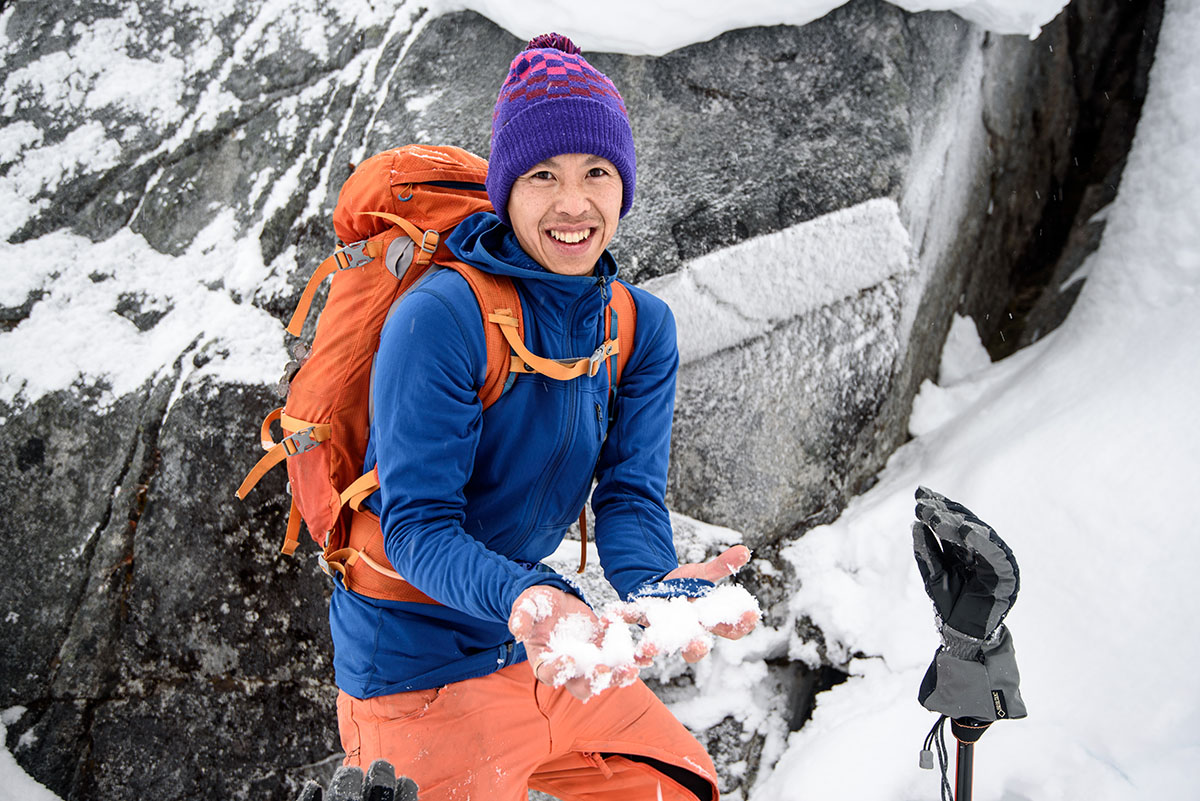
The sleeves come down to mid-palm on me, with a generously-sized thumb loop to keep the sleeves in place when reaching up. They are long enough to tuck your fingers into when not wearing gloves. However, while most high-wear areas of the jacket are holding up well after approximately fourteen days of skiing, the seams and material around the wrist are showing some fraying and pilling. I’ve also noticed some pilling in the area around the chest pocket zipper. I think the wear around the cuffs and thumb loops is due to me taking my hands in and out of my ski gloves multiple times each day. But for future renditions, Black Diamond may want to take that type of use into account and strengthen the materials in that area.
The CoEfficient Hoody has a low-profile hood with a scuba-type fit. The top comes up to the forehead, the bottom up to mid-chin, and the sides just cover the ears. When not in use, the low-bulk material sits comfortably behind my neck and out of the way. In mild conditions, I would go without a hat, alternating between using the hoody and not. When touring in frigid conditions, the hoody acted as another layer of warmth under my hat (the hood sits well underneath a ski helmet, too). However, in windy and cold conditions, the hood failed to protect the lower half of the face. In these conditions, I wore an additional neck gaiter and hid my face under the higher collared hood of my hardshell jacket.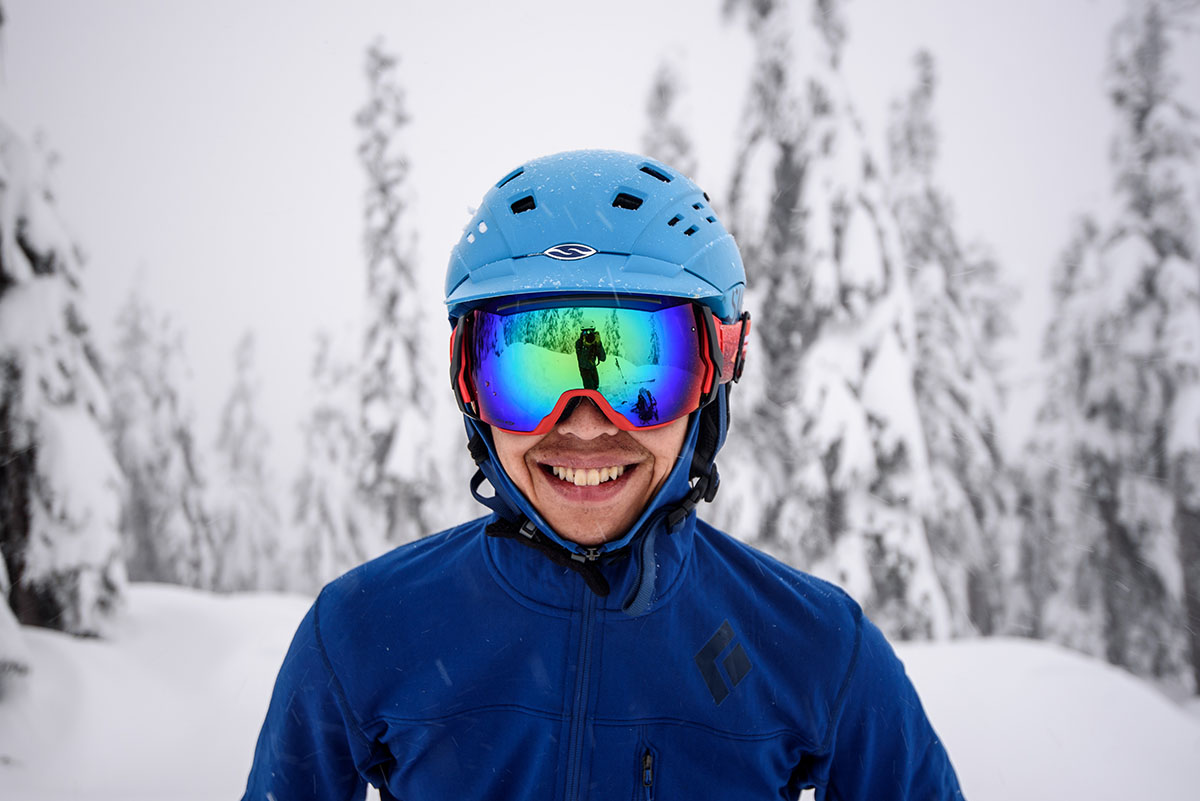
I wasn't able to try on this jacket in store before buying, so I had to base my sizing on the Black Diamond chart and reviews that I read online. As mentioned above, the CoEfficient Hoody was redesigned this year, and it sounded like the jacket retained the slim fit but was a little less snug than the previous model. Based on my waist and chest measurements (31.5'' and 38.5'', respectively), I was somewhere between a small and medium. I am fairly skinny (5'9'' and 145 pounds), but wanted this to fit as a midlayer and be able to wear a thicker baselayer underneath, if needed, so I ordered the medium size.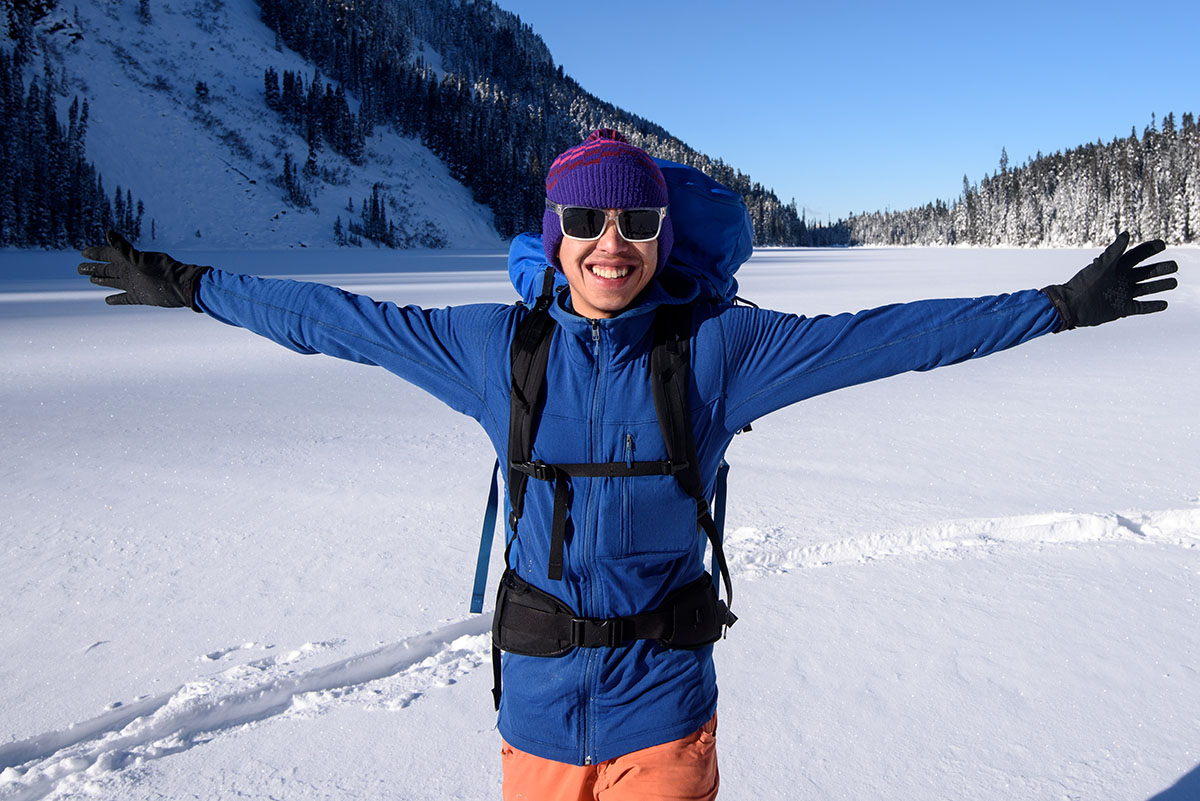
When it arrived, I realized it was too big. The fit in the chest and waist was fine, if a little loose. However, the length was just too long for me, reaching well below my waist. The small size fit much better, providing a comfortable snug fit without feeling confined or tight. The small version still has a fairly long cut, extending well below my waist, just like the medium. This means that the CoEfficient Hoody should fit people with long and slim torsos well. The slim cut hugs close, with a slight stretch that makes up for the lack of a cinch cord hem. I didn't have any issues with pinch points while wearing my hip belt, and the length of the jacket was long enough that it never rode up while moving around on skis. Without wearing a pack, however, the hoody may be a little too long and some material may bunch up near the waist.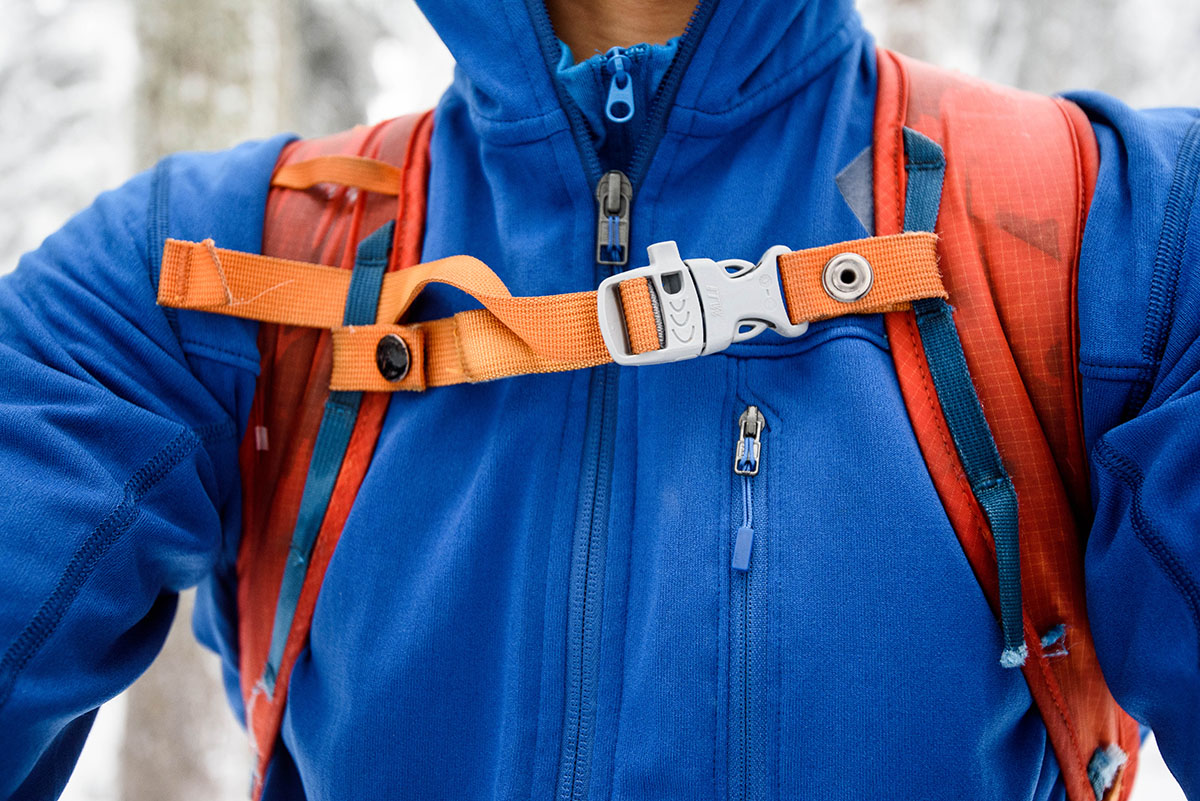
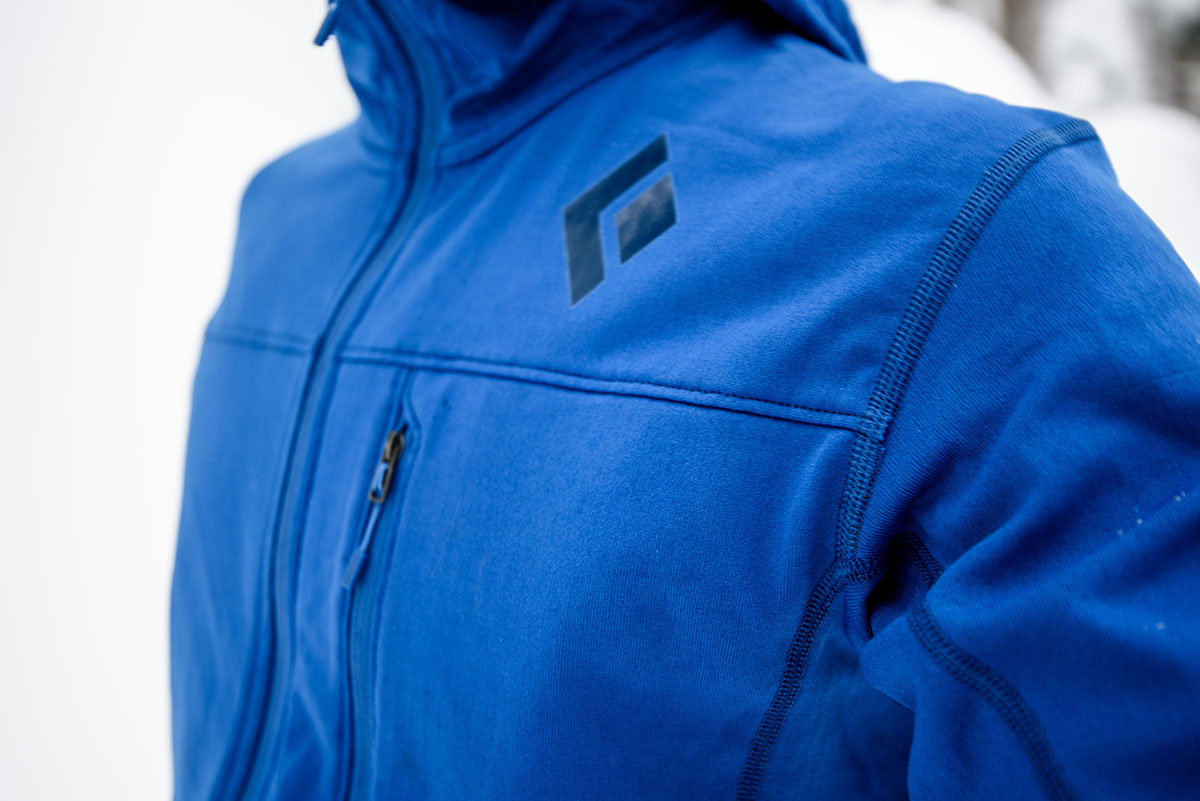
| Fleece Jacket | Price | Weight | Fleece | Warmth | Pockets |
|---|---|---|---|---|---|
| Black Diamond CoEfficient Hoody | $159 | 12.9 oz. | Polartec Power Dry | Lightweight | 1 chest |
| Patagonia R1 Hoody | $159 | 12.85 oz. | Polartec Power Grid | Lightweight | 1 chest |
| Arc'teryx Konseal Hoody | $169 | 10.8 oz. | Polartec Power Dry | Lightweight | 1 chest |
| Arc'teryx Fortrez Hoody | $199 | 13.2 oz. | Polartec Power Stretch | Midweight | 2 hand, 1 chest |
| Patagonia R2 Fleece Jacket | $169 | 14.3 oz. | Polartec Thermal Pro | Midweight | 2 hand, 1 chest |
As far as technical fleeces go, one of the closest equivalents is the Patagonia R1 Fleece Hoody, which retails for $159 (the same price as the CoEfficient Hoody). The features are very similar: hoody design, a slim fit, thumb loops, chest pocket but no hand warmer pockets, and a claimed weight of 12.85 ounces (364 grams) for the Patagonia. I measured the weight of the Black Diamond CoEfficient Hoody in a men's small at 10.9 ounces (308 grams), which is lighter than the claimed weight of 12.9 ounces (367 grams). Both layers offer very similar performance in terms of breathability and warmth, so the choice comes down to the aesthetics, whether you prefer a pullover or full zip style, and fit of the two jackets. Patagonia also offers thicker R2 and R3 fleeces.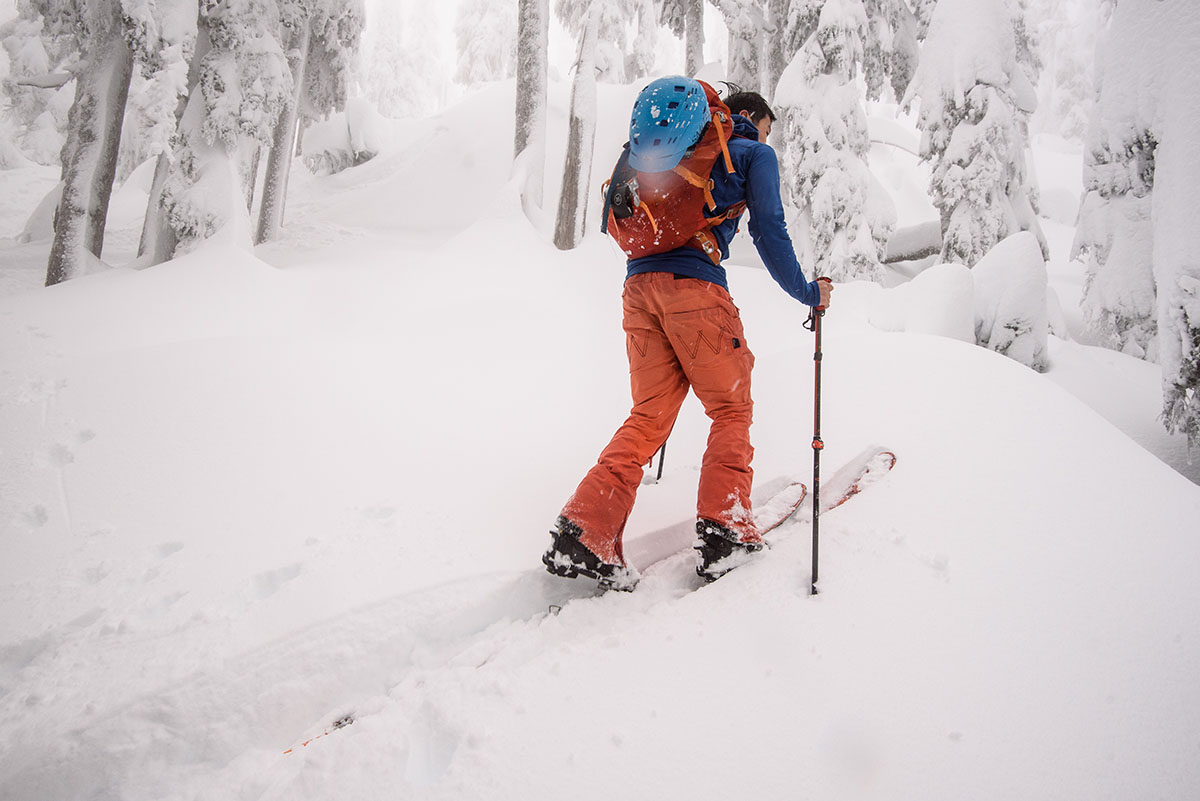
For those looking for a technical fleece with more weather resistance, the Arc'teryx Konseal Hoody 3/4 Zip is nice option. The Konseal offers more protection due to its DWR coating that sheds light moisture. It’s also the lightest of the three options, weighing just 10.8 ounces (305 grams), but the Arc’teryx is only a 3/4 zip, compared with the full-zip CoEfficient. For another performance fleece from Arc’teryx, the Fortrez Hoody can be worn as a base or midlayer like the CoEfficient, but adds two hand pockets, greater water and wind protection, and a higher level of abrasion resistance. The downsides of the Fortrez are extra weight and a slight drop in breathability. Both the Fortrez and Konseal fleece jackets offer built-in balaclavas, which is a nice touch.
Aside from the options mentioned above, the majority of fleece jackets are less performance-oriented and decidedly more casual than the CoEfficient. In fact, for active skiers and climbers who value breathability and lightweight warmth, much of the competition comes from synthetic-insulated jackets and softshell jackets, both of which can offer superior weather resistance. Fleece long has been a popular insulator, is one of the coziest fabrics made, and is still the leader in breathability, but realistically is somewhat limited from a performance perspective. The relatively low number of technical fleece jackets on the market reflects exactly that.